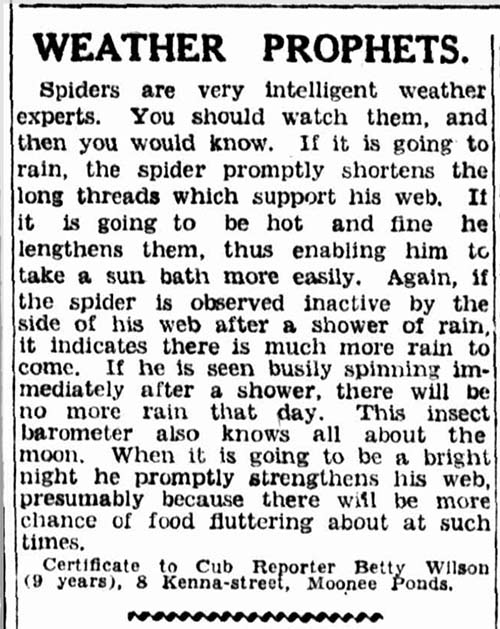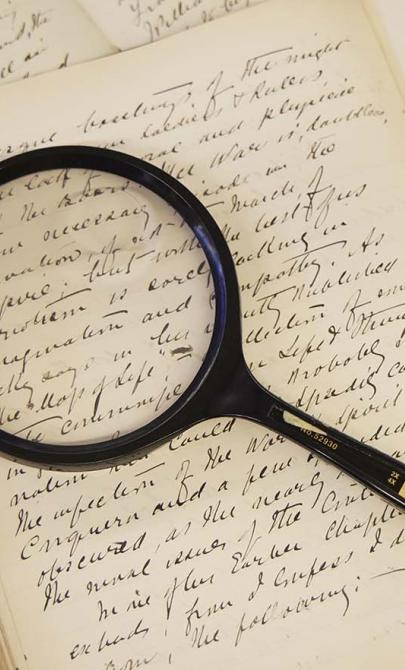Forecasting weather
Introduction
As cub reporter Betty Wilson (aged 9 in 1937) tells us, forecasting the weather isn’t all about maps and lab coats!
Animals, birds and plants can be great indicators of changes in the weather. For centuries, people have looked to nature for signs of what’s to come.
Here are some examples of natural weather clues:
- Bees return to their hives when a storm is approaching.
- Cows often lie down when humidity rises and air pressure drops before a storm.
- Frogs croak loudly when rain is coming — water creates the right conditions for laying eggs and producing tadpoles.
- Sharks swim to deeper water for safety when a drop in air pressure signals a storm or cyclone.
- Seabirds sense the same pressure change and fly low over the water or land.
- Other birds seek shelter in trees during a storm.
- Seaweed becomes dry and brittle in low humidity, but stays supple when humidity is high.

WEATHER PROPHETS, The Age (Melbourne, Vic. : 1854 - 1954), p. 17, 4 November 1937 nla.gov.au/nla.news-article205560442
Learning activities
Activity 1: You're a natural
Read the Weather prophets article with your students and plan a simple weather experiment like Betty’s. For example:
- Place a pinecone on an outdoor window ledge
- Record when the pinecone opens or closes, and note the corresponding weather conditions
- Leave the pinecone out for a week or longer to assess how accurately it predicts changes in the weather
- Create a class wall chart to track and compare observations
Activity 2: Folklore and weather prediction
Explore common weather-related sayings, such as:
- lightning never strikes twice
- kookaburras laugh when it's going to rain
- breezes bring on sneezes
- frogs croaking in a lagoon, rain will come soon
- clear moon, frost soon
- rainbow in the morning, sailors warning; rainbow at night, sailors delight
- smelly drains mean teeming rains
- dew on the grass, no rain will pass
- clouds shaped like rocks and towers mean we'll be beset by showers
- a ring around the sun or moon means rain will be coming soon
- red sky at night, shepherds' delight; red sky in the morning, shepherds' warning.
Ask students to:
- Research the accuracy of a selection of these sayings
- Decide whether each one is true, false or unproven
- Create a poster or brochure illustrating a selection of reliable natural ways to predict the weather



